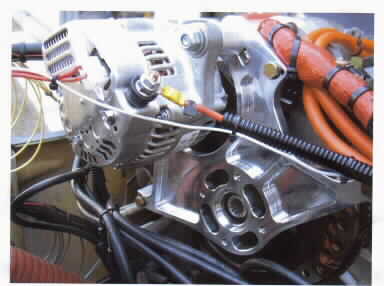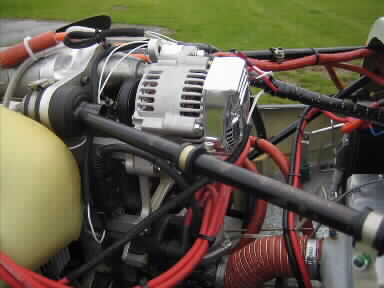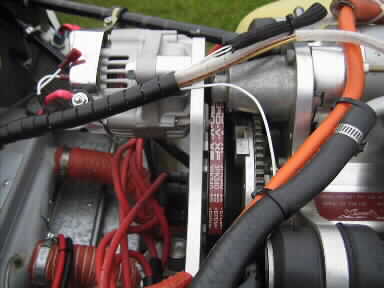
Replace stator, flywheel rotor magnet and regulator with belt driven alternator
Jabiru
aircraft use a stator to produce an alternating electric current. The stator is
fixed to the engine casing and a magnet fixed to the flywheel rotates over it.
As the magnetic field cuts across the winding, a current is produced. The stator
on the Jabiru aircraft output rises as RPM increases reaching a maximum of 44VAC
with a maximum current of 10AMP at 3100 RPM.
The
output of the stator is fed to a SCR regulator. The regulator is a Kubota
part number RP201-53710, RP501-7211 or 15531-64603 (there are different models)
of the kind used on small tractors.
SCR
regulators powered from AC power circuits use silicon
controlled rectifiers (SCRs).
Whenever the output voltage is below the desired value, the SCR is triggered,
allowing electricity to flow into the load until the AC mains voltage passes
through zero (ending the half cycle). SCR regulators have the advantages of
being both very efficient and very simple, but because they can not terminate an
on-going half cycle of conduction, they are not capable of very accurate voltage
regulation in response to rapidly-changing loads.
Disadvantages
of current setup
Due
to itís location within the firewall and inadequate cooling, the regulator is
prone to overheating and failure.
There
are further concerns relating to the total power produced by the stator as many
aircraft have much higher demands on power due to many electronic devices, such
as Electronic Flight Information Systems (EFIS) and Engine Management Systems
(EMS) and Global Positioning System GPS systems that are now fitted as standard.
The
modification is a standard kit that is available from CAMit (builders of Jabiru
aircraft engines and accessories).
The
kit contains all of the parts, accessories and fasteners that are required to
complete the modification as is accompanied with detailed fitting instructions.
The
kit has a voltage and power rating that is much higher and can produce a steady
current at lower Revolutions per Minute (RPM). Power output is rated at 10 AMP
at 750 RPM (idling speed) and gradually increases to a maximum of 40A at 75% of
operating RPM.


